Emanuel Swedenborg was born on the 29th of January, 1688 in Stockholm, Sweden, as the second son of Jesper Swedberg, the Lutheran Bishop of Skara.
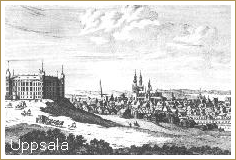
As a young man he began studies at Uppsala University and on June, 1st, 1709 he presented his dissertation. After his examination he turned his main interest toward the exactly, especially to the mathematical sciences. In the same year he traveled abroad, to study there the newest discoveries in the fields of mathematical, physical and other natural sciences. He went to see the "Archimedes of the north", Christopher Polhem, who told him about his actual inventions. "We derived pleasure from one another", wrote Polhem to Swedenborg's brother in law Erik Benzelius, "especially when I consider him being able to help me with my mechanical efforts and the therefore necessarily experiments. In this I owe him more than he owes me." By the way, Swedenborg got engaged with the youngest daughter of Polhem, but when he didn't felt really loved by her, he gave her back her word and stayed his whole life unmarried.
In 1710 Swedenborg traveled to London. To his benefactor and brother in law Benzelius he wrote: "I'm studying Newton every day, and I am desiring for seeing and hearing him." This pleasure was not granted to him. Instead he got to know many other famous scholars, as for example Flamstead, Halley, and Woodward. After this first stay in England he visited Holland, Belgium, Germany, and France, where he met the famous mathematicians Philippe de la Hire and Pierre Varignon in Paris. "It would go too far", wrote Swedenborg, "if I would mention all the scholars, that I visited and got to know during my travels, because I never missed an opportunity to do so or to visit libraries, collections and other interesting things." With several of this scholars Swedenborg had a scientific correspondence.
During his first travels through the various European countries the young scholar invented very different apparatuses and machines. Among others he designed the plans of a submarine, "that could cause big damage to the enemy's navy", of a new system of sluices, of a machine that was running by boiling water (first draft of a steam-engine), of an air gun that could shot 60 - 70 bullets without being reloaded, of an airplane, of a calculator and of a mercury air pump.
After his return to Sweden he was nominated as an Extraordinary Assessor in the Royal College of Mines in 1716. In 1717 he refused the chair of higher mathematics at Uppsala University to devote himself completely to his duties as a Assessor in the Royal College of Mines. In this profession he obtained great merits as an engineer and metallurgican. It is nearly impossible to list all improvements that Swedenborg introduced in the mining matters of his native country, and his merits for industry and arts in Sweden were beyond description.
Swedenborg also was one of the foundation-members of the Royal Academy of Science of Sweden. In 1718 he published the first Swedish scientific periodical for mathematics and physics, the Daedalus Hyperboreus, and he himself contributed to it numerous articles about technical subjects and scientific questions. In the same year he published a meaningful method to determine the geographical length by observing the moon - a problem that had occupied the scholars for a longer time.
He proposed King Karl XII. the governmental installation of a new system of measures and weights, which should ease the calculation and remove the fractions. This object was nothing less than the decimal system that is common today. Among the numerous other proposals he submitted the king, was also the establishing of an astronomical observatory and of a chair for mechanics at the Uppsala University as well as the plan for a Society for Exports of Swedish iron and tar. The king entrust him the realization of his plan for salt-producing, for which Swedenborg conceived and installed new apparatuses. Also this young technician with this lots of ideas invented a slow combustion stove, a method to find veins of metal that was unknown up to that time, etc.
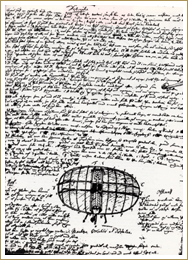
When Frederikshall was besieged, Swedenborg could show new demonstrations of his engineering skills. He found means and ways to transport a colossal sloop, two galleys, and five big boats from Strømsland across country, over hill and dale into the Iddefiord. In the same year he published ten books about algebra, differential and integral calculus, etc. In this work he also dealt with different problems of mechanics and ballistics. In the following period he spend his time studying mineralogy, chemistry, physics, and cosmology.
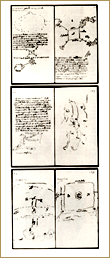
In 1719 he already presented a memorandum dedicated to physiology and biology to the Royal Medicinal Council that was titled: Proof, that our vital energy consists mainly of smallest oscillation and wave movements. In the same year he and his family were raised to the nobility by queen Ulrica Eleanora and now were called Swedenborg. Thereby he got seat and vote in the House of Nobles (a part of the Swedish legislature), where he was an active member whose opinion was appreciated up to his death.
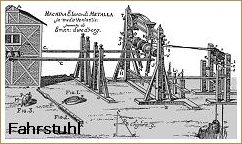
In 1721 in Amsterdam came out publications to very different subjects, such as a chemical-physical paper, new metallurgical examinations, and a second printing of his method to determine the geographical length by observing the moon. Returned to Sweden he resumed his work as an Assessor in the Royal College of Mines. Authorized by a royal decree he went in 1733 to Dresden and Leipzig to publish there four scientific volumes he had finished the manuscripts of while his work as an assessor. Subsequently were published the volumes Principia Rerum Naturalium, De Ferro, and De Cupro. The Academy of Science in Paris published the volume De Ferro in their description of mechanical arts "because it was considered to be the best about this subject".
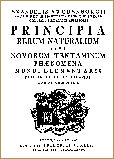
M. Th. Freneh, professor of physics at the university of Cincinnati wrote about Swedenborg's Principia: "The following theories of modern science you can find explained more or less precisely in Swedenborg's Principia: the theory of atoms (the atom as a small solar system of energy nucleus's with movements that follow mathematical laws), the origin of the earth and its associate planets from the sun, the theory of light waves, the hypothesis of nebula, the theory that warmth is a kind of movement, that magnetism and electricity (and also light and electricity) are closely connected, that electricity is a kind of ether-movement and that molecular energy come from the effect of an ether medium."
In 1734 Swedenborg let print his work Opera Philosophica et Mineralia (Work about Philosophy and Mineralogy) in Leipzig, in which he applied his theory of oscillations and in general the theories of his Principia to the phenomenons of biology (as he already did in 1719). At the same time he also tried to explain the psychological phenomenons from a similar basis. The work about this subject was published in English with the title Psychologica. In the following time he turned his interests to the problems of the existence of the soul and its relations to the body. The thought that the body might be the seat of the soul caused him to study anatomy and physiology. As a first result of his investigations he published in 1740 and 1741 in Amsterdam his two-volumed Oeconomia Regni Animalis (The Kingdom of Animals).
Dr. Alf Acton commented in this context: "It's a remarkable feature of this work which seemingly only wants to deal with the last kingdom of nature, that it yet starts with the deepest speculations about the creation by the Infinite. Here we see the basis of the whole later philosophy of Swedenborg, that he never swung away from." Furthermore Dr. Acton wrote: "Therefore I can not agree with the opinion of Professor Lamm, who says that Swedenborg left the mechanistic and cartesic view of the Principia under the influence of Aristotle, Plotin, Leibniz and others, and turned to a new-platonian theory of emanation.
"A Philosopher's Note Book" (Philadelphia, 1931) gives information about Swedenborg's sources. This important document contains all extracts which Swedenborg has noted down in the course of his comprehensive reading. It is right, that Swedenborg has supplemented his former theories by a new "organic" point of view. At this Professor Lamm is right in saying: "Within his scientific way of thinking this organic view becomes apparent by the commonly interpretation of the teaching about the reflection of the macro-cosmos in the micro-cosmos, that says that not only man but every smallest part of universe is a small world of its own with the same structure and the same laws as the macro-cosmos. The teaching from the series and the grades is mainly for helping for a better illustration of this organic connection between all things in nature ... This bonds of continuity and analogy, that hold together high and low, big and small, earthly and heavenly, for Swedenborg are essentials of his philosophy ... For him the task of philosophy was and remained to uncover the imperceptible fine threads that form the great tissue of creation." Although the Oeconomia is rather a nature-philosophical than a pure scientific paper, yet there are a number of new scientific ideas found in it, especially about the evolution of the foetus (Swedenborg was one of the first pioneers of the theory of epigenesis), the respiratory movement of the brain tissues, the function of the cerebral cortex as the seat of emotional functions, the localization of the centers of senses and movement and the function of the ductless glands, etc.
Three years later (1744/45) Swedenborg published the first two volumes of his Regnum Animale (The Kingdom of Animals, Explained Anatomical, Physical, and Philosophical), a huge work in 17 volumes. Professor Anders Retzius had shown, that you can find here (in the anatomical and physiological works, especially in Regnum Animale, that he called a phenomenal one) thoughts, that belong to latest times, a range of interests, induction, and tendency that only can be compared with that from Aristotle. Since then diverse authors have articulated in a similar way, like professor Christian Lovén, professor Martin Ramström, professor C. G. Santesson, and above all professor Gustav Retzius at different occasions.
The study that professor Martin Ramström dedicated Swedenborg's great work about the brain, is the best we have about this subject. Professor Ramström emphasises the three thesis's that attracted his attention mostly:
1. The statement, that the centers of emotional functions are located in the cerebral cortex,
2. his theory of the cerebral locations (that professor Lamm called epoch-making),
3. the theory of the cerebellula or of the original nerve cells, which in total form the entirety of the cerebral cortex.
Ramström finishes his study as follows: "It has to be accentuated, that Swedenborg, when he gathered his facts from professional literature that was numerous and by no means coherent, he did not found this facts presented or simply being obvious in the big works about the main subjects. On the contrary he had to dig out them as it were, namely out of a chaos of erroneous observations, wrong interpretations, and strange conceptions; and he had to go on ploughing, sifting through and working out before he could draw conclusions. Considering this you have to admit that it was a really ingenious achievement to extract the hidden ideas out of such a chaos and to find out such a lot of truth albeit some imperfection."
In 1745 Swedenborg put a stop to his scientific activities. Already in his lifetime the scholars of his country paid him highest respect. Thus in 1734 the Academy of Science in St. Petersburg elected him for a correspondent member. As his ideas were fare ahead of his time, the scholars could do justice to his genius and in many cases honor the priority of his discoveries or theories only very much later. Thus the great French chemist Georges Dumas called Swedenborg one of the great fathers of modern crystallography and Professor Patterson from Pennsylvania University wrote: "Lots of the observations and experiments about magnetism in the "Principia" you can think being of recent date and they wrongly were attributed to modern authors."
Swedenborg still was working on his Regnum Animale when he began to notice specific psychic states by himself. From June 1743 onwards he used to take notes about it just as well as about the prophetic and symbolic dreams that appeared at this time. His mental attitude that always has been reverential towards divine objects now became really religious.
Between 1743 and 1745 he went through a crisis that you are correct in saying being mystically, and while its passing he totally turned his heart to God. The Diary of his Dreams that he began in December 1743 and concluded in October 1744 informs us completely about his state of mind of that days. Here we are witnesses of the arising and beginning evolution of his psychic, paranormal abilities: meaningful dreams, doubling of self, ecstasies, beginning of clairaudience, emerging of visions, emotional and kinetic automatism's, etc.
In April 1745 in London he had a vision of Christ. Swedenborg himself described this occurrence as follows: "During the night appeared a man to me. The man said he be the Lord God, the creator and savior of the world. And that he has chosen me to interpret the inner, spiritual meaning of the Holy Scriptures to mankind and that he himself will dictate what I should write down about this subject. In this very night were opened to me the spirit world, hell and heaven for my conviction, and I find there numerous persons of my acquaintance from all social classes. From that day onwards I renounced from all worldly scholarship and I only worked in spiritual objects according to what the Lord God dictated me to write. In future the Lord God opened the eyes of my mind every day to see while wide-awake what was happening in the other world and to talk to angels and spirits while being absolutely awake."
"The vision lasted about a quarter of an hour. In this night the eyes of my interior man were opened; they get the ability to look into the heavens, the spiritual world and the hells. From that day onwards I gave up the studies of worldly sciences for dedicating me completely the transcendental objects according to what the Lord God dictated me to write."
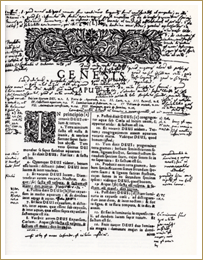
In the same year (1745) Swedenborg published a half scientific and half religious essay: De Cultu et Amore Dei (About the Worship and the Love of God), in which is dealt with the creation of the world, the origin of vital patterns and the appearance of humans. Thereafter he began to study the bible in its original and wrote a first attempt of an allegorical interpretation of the Holy Scripture: Adversaria in Libros Veteris Testamenti - a book that yet was published after his death. Especially interesting are the numerous passages that he truthful recorded his transcendental experiences in. They as it were form the (lost) entry to the Diarium Spirituale and refer to the years 1745 and 1746 while the Diarium was written between 1757 and 1765. The Adversaria shows that at this time he had not totally set himself free of the theological world of thoughts or at least from the mode of expression of his time. His spiritual enlightenment yet was not satisfactory although his gift of prophecy seemingly already had burst into full blossom.
In 1748 he began to write down his opus magnum, his first theological work, called Arcana Coelestia (Heavenly Secrets in the Word of God), which eight great quarto volumes left the printing office between 1749 and 1756. Here he had freed himself completely from the traditional theology and made transparent verse by verse the inner or spiritual meaning of the first two books of Moses as well as some parts of the New Testimony. In this fundamental work his whole theological teaching is already found.
In 1758 he published in London in turn De Equo Albo in Apocalypsi (The White Horse), De Coelo et Ejus Mirabilibus et De Inferno (From Heaven and Its Miracles; Heaven and Hell), De Telluribus in Mundo Nostro Solari (The globes of our Solar System), De Nova Hierosolymae de Domino (The Teaching of New Jerusalem by The Lord), and De Ultimo Judicio (Of Doomsday). In the same year he continued the writing-down of the voluminous work Apocaypsis Explicata Secundum Sensum Spiritualem (The Apocalypse Explained by her Spiritual Meaning, Explained Apocalypse) that he began the year before and that yet was unfinished. From it he only published some parts, as for example De Athanasii Symbolo, De Verbo, etc. In 1759 he wrote different small papers that were published in his inherited works. 1763 four small theological papers about the Lord, the Holy Scripture, life and believing were printed in Amsterdam, and also two important Books, titled: Sapientia Angelica de Divino Amore et de Divina Sapientia (The Wisdom of Angels Concerning Divine Love and Wisdom) and Sapientia Angelica de Divina Providentia (The Wisdom of Angels Concerning Divine Providence). In the following years he wrote several books, of which he published (in Amsterdam) only the most important ones: Apocalypsis Revelata, 1766 (Revealed Apocalypse of St. John), Delitiae Sapientiae de Amore Conjugali, 1768 (The Delight of Wisdom Concerning Legitimate Love, The Voluptuousness of Foolishness Concerning Wanton Love), and De Comercio Animae et Corporis, 1769 (The Intercourse between Body and Soul), which probably was an answer to a letter of Kant. Finally in 1771 was printed the last work that was published by Swedenborg himself, Vera Christiana Religio, (The True Christian Religion), a summary of his whole teaching. Prior to his death in addition he wrote an appendix to this work in Latin language that was published by professor Immanuel Tafel as well as all his other inherited works and that afterwards were translated in all languages of the civilized world.
The Swedish historian Victor Nilsson writes in his book: Sweden, Its People and Its History, (Stockholm, 1910): "If the theological works of Swedenborg in the first instance brought miscredit to his many scientific researches, in last instance his reputation as a great religious thinker outshined the reputation that he had acquired rightfully as a scholar and philosopher." You see, how wrongly his religious writings are called only "the dreams of a visionary" or "the silly talk of a mystic".
An ignorant could have the idea, that Swedenborg after his enlightenment had lost his excellent qualities he was brilliant in while he was a scientist and philosopher, because mystics use to make light the demands of good sense and logic. Yet was is astonishing at the religious works of that "prophet of the north" the absence of any kind of mystic confusion on the one hand and the continue of a clear-headed scientific point of view on the other hand. Because of his visions Swedenborg had never allowed any kind of irrational element neither in his metaphysical system nor in his theology nor in his moral philosophy. His visions itself always adapted on the demands of an exacting logic and explained themselves completely in the light of the rational principles the author expounded. They are not visions of a contemplative soul, they rather show the character of an observing and at the same time critical mind.
Swedenborg succeed in an admirable way in reconciling science, philosophy, and theology. "Now you are allowed to enter the mysteries of belief with the intellect" (nunc licet intellectualiter intrare in arcana fidei) is the watchword that is written in golden letters at the sublime gable of the theological building that he founded. Man of the present time is to understand and to render account for his belief by his intellect. Swedenborg had eased this task by removing all rational difficulties that are unavoidable from every verbatim interpretation of biblical texts. He emphasized that the true meaning and the divine essence of that texts are found above all in their concealed or spiritual meaning. Emanuel Swedenborg based his interpretation of the Holy Scripture on the "science of correspondence that exist between the spiritual or world of causes and the natural or world of effects". This science of correspondence has permitted him to interpret the Holy Scripture in a way that a intellectual normal person can understand the content of the bible.
Swedenborg's theology strictly speaking you can summarize as follows: he replaced the traditional idea of a judicial relationship between man and God by the concept of an organic or vital bond between creator and creature. In this way the dogmas of the northern thinker have almost the kind and value of biological laws. In his system the Fall of Man, the Salvation, the Incarnation, the Last Judgement, and Return of the Lord resemble less the different scenic events of a divine drama, a Divina Commedia, than the consecutive segments in the history of vital relationship between God and man.
This dynamic concept of our connection to divinity also is the basis of the swedenborgian moral. However the love of a person, same kind is the spiritual life, that flow into him. To do rightfully is more valuable than to think rightfully. "Omnis religio est vitae et vita eius est facere bonum". In Swedenborg's works all kinds of moral instructions are resulting from the source of that motto.
"I often said to the King (Gustav IIIrd of Sweden)", wrote the First Minister Earl Hoepken to General Tuxen, "if it ever occurred that you have to found a new state, no religion would be more appropriate to grant it strength and stability than the one Swedenborg acquainted us with. And that for two reasons: first because this religion more than any other endeavors to educate honest and diligent citizens because it teaches, that worshipping of God consists of Life and good deeds. Furthermore it diminishes the fear of death. The teaching of the New (swedenborgian) Church is more distinct and more satisfactory to good sense than any other one. It is irreconcilable with fanaticism and superstition of any kind, these awful scourge of mankind. After all in his system I am finding a simplicity, a context, a logic, that are synonymous to what I find everywhere in nature that means in the creations of God."
You will understand this opinion of Earl Hoepken all the better as for Swedenborg love for one's fellow man necessarily includes love for one's fatherland, for mankind, and for church. Christian love essentially consists of fulfilling the duties of one's profession because of the desire to service the community as large. Already on this side of life we take part in the life of heaven or the life of hell, because heaven and hell above all are spiritual states, that depend on the good or evil nature of our emotions.
This swedenborgian heaven is a state of perfect life where everybody joyfully is taken up by the place he fits best. And hell is not a place of punishment but a kind of purely selfish existence that is contrary to the essentially unselfish character of life that flows from God. The teaching of Swedenborg is in a high degree optimistic. He does not categorical ostracize any kind of pleasure. To him all pleasures even the sensual ones are good in itself assuming that they stay within their special limits and that the person does not desire them unrelated to the purpose that they are attached to normally.
Thus Swedenborg in his sexual ethic demonstrates a highly idealistic and simultaneously a extensive mind. To Emerson De Amore Conjugiali (Married Love) is the most sublime poetry that is written about spiritualized love. Therefore Swedenborg does not reject sexual love as diabolic as such. It rather is a natural impulse that is not to suppress bur to spiritualize and to rectify if you don't want to become finally incapable for heavens happiness that is completely innocence. That is why he teaches as well that there is a legitimated love in heaven. The teaching of the everlasting of that love he argues with psychological considerations and it's hard to object to their conclusiveness. No other man has registered better the character of the emotional difference of between man and woman. To him the sex is a matter of soul as well or even more as of body.
In broad outlines these were the characteristics of the swedenborgian theology and moral, within that there is absolutely nothing that is alike the product of an effusive mind. "The most important step forward that the history of religion had taken in recent time we are owing the genius of Swedenborg. The truths that came into general circulation out of his system you encounter every day since they influenced the opinions and denominations of all churches and also of the people beyond church."
Of one of the basis' of Swedenborg's metaphysics Professor L. F. Hite had expressed as follows: "Swedenborg's understanding of love is a new one in the history of human thinking and philosophical its the most important of all basic ideas that mankind had ever created. The term of substance and the term of causes are used by him clearly in away that granted them actually a new purport. That very vivid meaning he gave them by his teaching of love."
"And that man", shouted the great English poet S. T. Coleridge, "they tried to describe as mad! Oh we two or three times lucky ones, if it only all of the scholars and instructors of this age would been given to suffer from that madness." "Swedenborg", said Henry James, father of the famous psychologist, "had the most healthy and most comprehensive mind this age has seen." (JAMES, H.: The Testimony of Genius). To that statement there is another proof of a special kind that is in the in his active sharing in the labor of the Swedish Parliament. "Up to his highest age", wrote one of his fellow-countryman, "he was interested in financial administration and the political matters of his country, as well in the times of sittings of the Swedish parliament as in the meantime. A big number of documents are giving evidence of that." "His opinion of that subjects", wrote another Swedish writer, "always was accurate, prompt and correct." One of best experts in this affairs, minister Earl Hoepken, stated that the most carefully and best written memorandums about financial affairs that were submitted to the parliament of 1761 came from Swedenborg.
At the end yet some short excerpts from a document which weight is unmistakable. it is the speech that was hold in the name of the Royal Academy of Sciences by the member of that academy Knight Sandel in commemoration to Swedenborg in the big hall of the House of the Lords: "Dear Sirs", he began, "please permit me in this hour not to guide your attention to a strange and tiresome subject but to the pleasant commemoration to a man of honor who was famous for his virtue and scholarship and whom we all knew and loved as one of the oldest members of this academy. He was one of the most comprehensive genius' who never rested, never got tired, who was occupied with the deepest sciences and who dedicated so many years to the research of the secrets of nature, but afterwards made every effort to enter into much deeper secrets but never lost sight of moral nor fear of God, who possessed a particular mental strength even in his at the end very old mortal remains but even than tried boldly how much the strength of thinking could be stretched.
Imagine a lucky combination of memory, capacity, and assessment. Besides the best heart, refined according to the rules of life he had noted down for his own exhortation. He saw several successions that occurred to the throne of our kingdom and to all times he was in a special favor of all sovereigns. The way he was satisfied with himself as well as with all circumstances he lived a life that was in every respect happy, indeed a highly happy. He deceased in London in the eighty-fifth year of his life, satisfied by life and happy to be approaching his transformation."